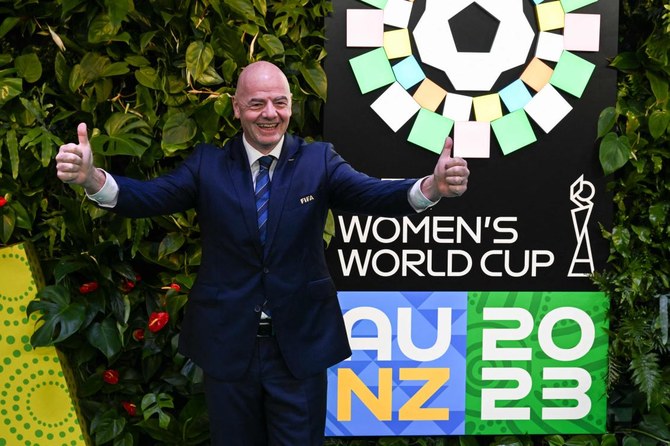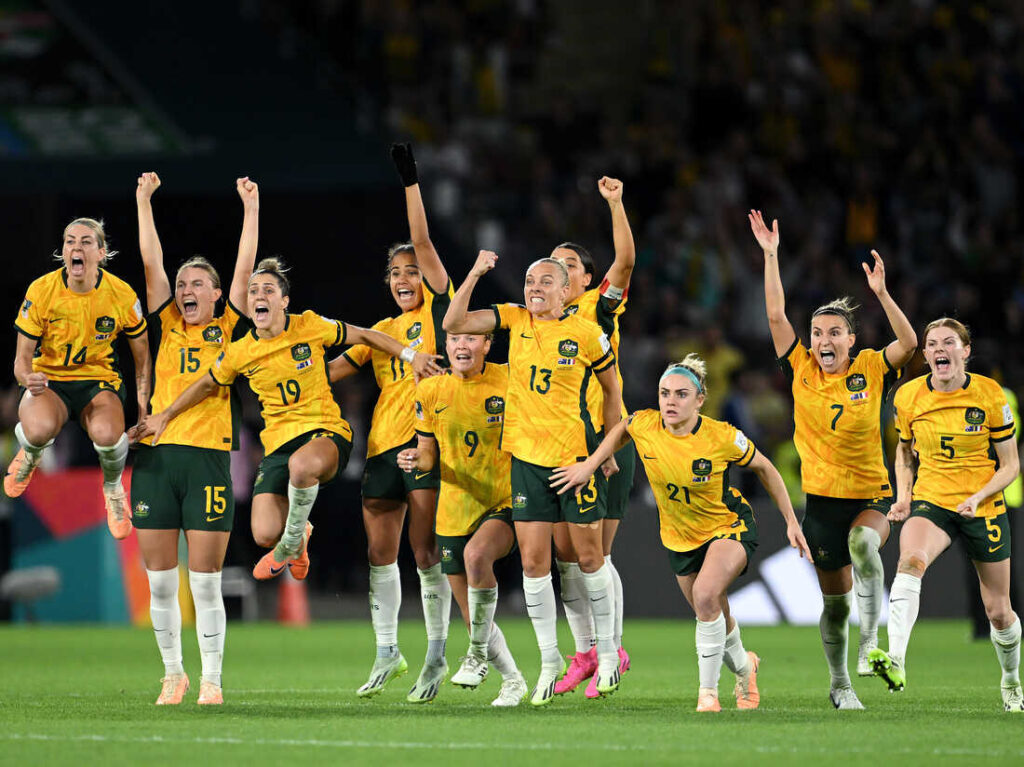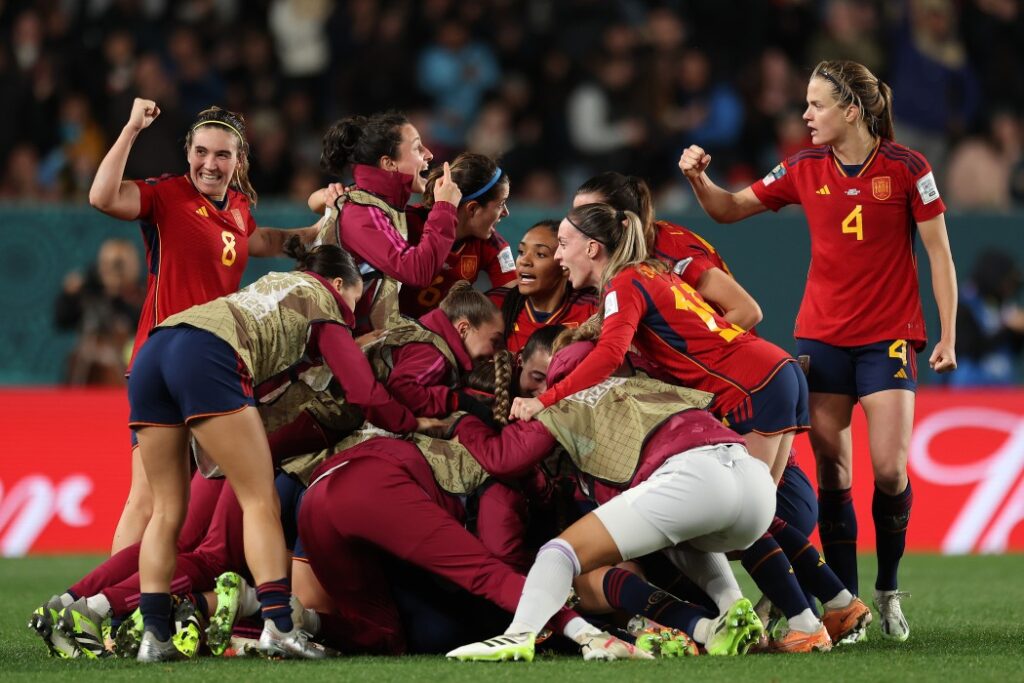Girls Down Under are on Top of the World: How the FIFA 2023 Women’s World Cup Changed the Laws of Gravity for Women’s Sport
August 31, 2023
Girls Down Under are on Top of the World: How the FIFA 2023 Women’s World Cup Changed the Laws of Gravity for Women’s Sport. Major international events advisor, Michael Pirrie, outlines the lessons and legacies from the ‘Best Ever World Cup.’
INTRODUCTION
It began with dawn raids on a luxury five-star Swiss hotel and ended eight years later with a football showdown in a sporting galaxy far, far away.
The FIFA Women’s World Cup travelled to novel territories in Australia and New Zealand to create a new future for the world game and for FIFA.
By the time Spain’s football conquistador, Olga Carmona, launched a strike deep into the net’s bottom left corner, like a guided missile, it would soon be tournament over and mission accomplished.
The great Spanish sporting nation had won its inaugural women’s world cup (only the second after Germany to win the men’s event as well); and FIFA had turned a deeply flawed organisation into a more positive global presence, heralding an unlikely renaissance.
The Swiss hotel raids netted 14 FIFA officials on corruption charges, paving the way for a string of far-reaching reforms that culminated in the Spain-England final, bringing the curtains down on the first World Cup selected under Gianni Infantino’s changes.
The planning and administration improvements surrounding the tournament have helped to correct important governance issues involving the world game and its flagship events.
These were plunged into darkness and uncertainty when the lights almost went out at FIFA headquarters in 2015, following the hotel raids, arrests and charges.
“They (FIFA officials) were expected to uphold the rules that keep soccer honest. Instead, they corrupted the business of worldwide soccer to serve their interests and enrich themselves,” US Attorney General at the time, Loretta Lynch, said at a news conference in New York.
The turnaround from the police raids and corruption probes has been almost unparalleled in modern sport, culminating in the success of this world cup.
If the Argentina-France final rescued the Qatar World Cup from international condemnation over scandalous human rights violations and venue construction deaths, this tournament also helped to push FIFA forward from the sins of the past.
While the final of the Qatar cup was epic, the Women’s Cup in Australia and New Zealand was epic from start to finish.
By the time the football kicked off a long list of firsts had already been ticked off – biggest tournament, most tickets sold and first dual host nations.
BEST EVER CUP
The success of this cup, in locations and conditions distant from football’s epicentres of Europe and South America, was almost as unexpected as it was unprecedented.
The Cup witnessed the birth of a new football nation in real time as Australia’s national Matildas team progressed deep into the tournament, racking up record broadcast, digital and attendance numbers.
The Australia-New Zealand double act also worked for FIFA in other ways, opening another gateway into Asia, the world’s most populous continent where Cup success has been harder to find than Olympic gold medals.
The success of the mega event followed initial doubts the tournament would survive the move from France in 2019 to Australia and New Zealand, soccer minnows, located on the planet’s football perimeters in faraway Oceania.
The factors behind the Cup’s success are now being studied by major events organisers, governments, multinational companies and sport governing bodies as statistical data emerges.
Modifications to FIFA’s host nomination process were the game changer; fundamental to the choice of Australia and New Zealand as presenters of the tournament, widely acclaimed as best Women’s World Cup since the first in China in 1991.
Even the most optimistic supporters of women’s sport could not have predicted the scale of interest and engagement in women’s football coming from tournament.
– In Australia 9 in 10 households watching TV during the national Matildas team semi final against England tuned into the game.
– Aggregate national tournament viewership topped 24 million
– Almost 2 million fans attended matches, 500,000 over initial projections
– Stadium occupancy was over 84 % across Australia and New Zealand
– Australia’s seven tournament matches attracted 403,136 fans with an average of 57,591 for each match and reaching 99.2% of capacity at each venue
– Optus Sport, the tournament host broadcaster, saw social media views of Cup content of over 75 million
– FIFA’s digital platforms experienced a 130% increase in visitors compared to the 2019 Cup, with over 3 billion content views.
Discoveries in medicine and science – from black box flight recorders, ultra-sound imaging and clinical applications of antibiotics to space-shuttle heat shield technology, wi-fi and other breakthroughs – have helped to highlight Australia as a clever country.
Australia, however, is rarely happier than when competing in or hosting a major international sporting event.
The nation was doubly joyful therefore at staging and appearing in one of the world’s biggest sporting events at a home World Cup.
There was perhaps even triple joy – and much relief as well – at FIFA’s declaration of the Cup as ‘Biggest and Best Ever.’
This matched the famous declaration by the former late IOC President, Juan Antonio Samaranch, that the Sydney 2000 Olympic Games, also was the best ever.

CRITICAL SUCCESS FACTORS
The Cup’s success was ultimately due to an irresistible combination of a global sporting event hosted by two nations captivated by sport with popular and competitive teams
The tournament also reflected the prominent roles of women in the political, sporting and social history of the host nations.
While New Zealand (1893) and Australia (1902) were the first countries in the world to grant women the right to vote, women have represented Australia at the Olympics since 1912.
That trail blazing tradition continued at the Cup.
Morocco defender, Nouhaila Benzina, created tournament history when she became the first senior level player to wear a hijab during a FIFA Women’s World Cup game. Korea’s Casey Phair became the youngest at just 16.
“This FIFA Women’s World Cup has been truly transformational, not only in Australia and New Zealand, but all over the world…,” FIFA President Gianni Infantino said in wrap up comments.
Australia is now one of the few nations to have successfully hosted both mega events.
WOMEN’S SPORT TRANSFORMED
The Cup demonstrates women’s football as a major force in sport and wider society, no longer looming on the horizon.
The tournament smashed through sport’s glass ceiling and competition from overlapping major international events, including the Fukuoka World Aquatics Championships, Ashes Test Cricket series, and other prominent fixtures.
The Cup’s success reflects what happens when you bring the world’s best footballers and teams together and give them the right venues and environment to perform in.
“This has probably been the most amazing four weeks of our careers,” Australia’s captain and Chelsea striker, Sam Kerr, said, reflecting on the team’s performances.
It may have also been among the four most amazing weeks in recent times for the co-hosts as well.
FOOTBALL FANTASY
While life in Australia and New Zealand has returned to a more normal routine, the Cup created a sense of wonderment that transfixed vast sections of the host populations and beyond.
The euphoria reached Australia’s political capital, in Canberra, where Prime Minister Anthony Albanese even floated the prospect of a public holiday if the Matildas won through.
Well prepared and operated venues and diverse local social and cultural conditions provided a rich environment for teams, fans, and visitors.
The multicultural communities of New Zealand and Australia – where immigrants from every nation in the world have settled – filled venues with their love of sport, especially soccer.
This produced an electrifying international competition setting for teams and players from all backgrounds, generating compelling football, including 164 record goals.
Almost 25,000 fans gathered for a group stage match between Columbia and Korea at midday on a Tuesday.
Stadiums, fan zones and public spaces were filled with a party atmosphere that radiated out from the venues across host cities, nations, and global celebration sites on giant screens, on-line video and social platforms and communities.
The final was staged at the home of Australia’s biggest sporting events, the main Sydney 2000 Olympic Games site, at Stadium Australia, attracting over 75,000 fans.
The final was also the fifth time the stadium reached full capacity during the tournament, and set an audience record for football in Spain, with nearly 8.9 million unique viewers.
“Incredible,’ was how 23-year-old Spanish captain Carmona described the occasion.
“When you go to bed this is what you dream about constantly.”
WINNING FEELING
The Matildas run was perhaps the single most important factor in the tournament’s overwhelming success, confirming the importance of host nation performance as paramount in major global events.
The pathways and planning for the Australian team’s success were as important as preparations for marketing, ticketing and sponsorship.
Australia is only the second nation to host a world cup and finish in the top four after the USA.
The Matildas progress and Australia’s joyful embrace of the team’s triumphs and set backs against football’s traditional super power nations was pivotal to driving national and international engagement.
This reached fever pitch during the Matildas 10 kick penalty climax against France, producing one of the most gripping moments in recent world sport, which almost brought Australia and the Cup to a standstill.
Video of tense, anguished and cheering passengers, following the drama mid-air in their jet, is believed to have been viewed 24 million times on social within just hours of the spectacle.
The success and positive impact of the Matildas and the tournament was also vital to the Australian government’s decision to allocate $A200 million at the end of the Cup to women’s sport.

NEW CUP MODEL
The Cup changed the narrative for major international sporting events, organisers and host governments, often forced to defend budget blow outs and little return on investments.
The use of existing facilities and support services in Australia and New Zealand eliminated the need for expensive additional stadiums.
This slashed costs and removed the risk of new, highly priced infrastructure becoming dormant and dusty post tournament, without the tournament upsetting local communities seeking new schools and hospitals instead of ghost sports sites.
CONCLUSION – EVERYTHING HAS CHANGED
This Cup accelerated the development and revealed the enormous potential of women’s football like never before.
This has helped to restore credibility in FIFA’s signature event.
The Cup had a broader fan base than previous women’s sporting events and was more in tune with women’s lives on and off the pitch.
The Cup was a sporting, social and digital phenomenon, soaring more rapidly on the sports hits chart than a Taylor Swift download.
The Cup was poetic and powerful, and like Swift’s music, it was also ‘Fearless.’ The resale platform for Cup tickets was even said to be in as much demand as Swift’s concerts later this year.
Commercial innovations were successfully introduced, enabling the Cup to break even for the first time, separately selling broadcast and sponsorship rights to the tournament instead of packaging the deals as part of the men’s World Cup. This generated more than $570 million.
“We didn’t lose any money and we generated the second highest income of any sport besides, of course, the men’s World Cup, at the global stage,” said Infantino, adding “there are not many competitions, even in men’s football, that generate more than half a billion dollars.”
The Cup also broke down geographic and time zone barriers, setting new viewing records in key markets around the world and around the clock.
Two of the four women’s teams matches began overnight or early morning but averaged 3.8 million viewers, up 2 per cent for the first four matches in 2019.
The television broadcast figures for the Matlidas round of 16 match against Denmark were extraordinary, out rating Australia’s two biggest men’s sporting events, including the grand final of the Australian Rules Football league, one of the biggest domestic competitions in the world.
If sport floats hope, this Cup soared to new heights as the ultimate expression of femme football, and more Cup teams (32) gathered on the world stage than ever before.
While the FIFA president said pre-tournament that “the future is women,” the Cup also highlighted key restrictions that still hold women back. These include, again, the enormous disparities in wages and returns, highlighted by the $US 440 million prize pool for the men’s World Cup in Qatar last year, compared to just $US 110 million for this women’s Cup.
The safety of girls and women in sports settings so they can fulfil their dreams and potential, remains more urgent than ever.
The removal of Luis Rubiales seems inevitable as the Spanish inquisition and international outrage continue as part of the process to remove sexism and men behaving badly.
The fallout from the Rubiales storm will not overshadow the accomplishments of Spain’s Cup winning team, nor other national teams who participated in the Cup as some fear.
The global show of solidarity for Jennifer Hermoso and her team is also a reflection of how the World Cup class of 2023 has made football and society a better place, and they will be remembered in a league of their own.



